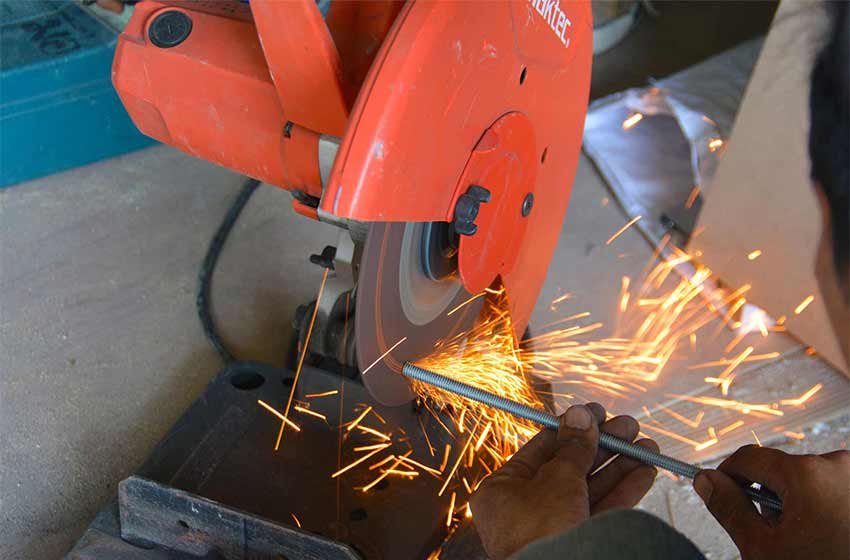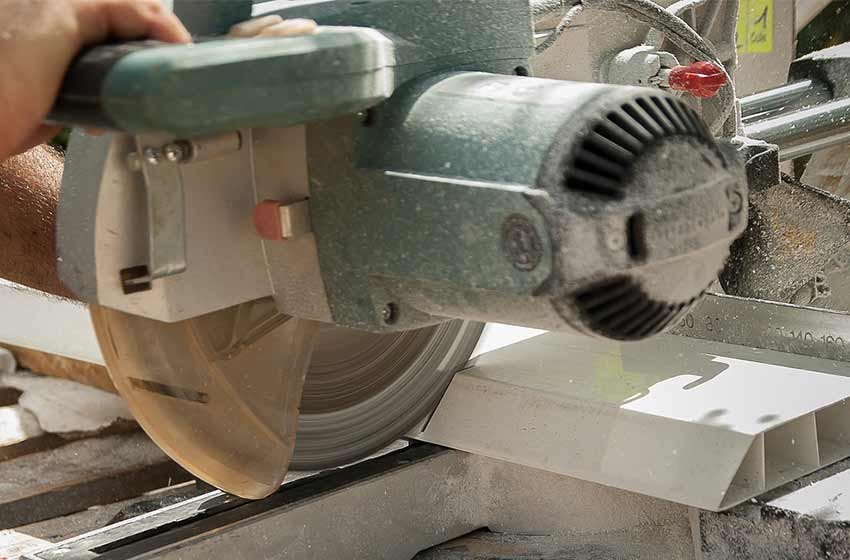Everything You Need To Know To Drill Into Brick
Drilling into brick can seem quite daunting for those who haven’t done it before but it doesn’t have to be that way!
Having the right tools and a good idea should get you through. We’ve put together a step by step guide that will have you hanging mirrors, shelves and cabinets up in no time!
Is it better to drill into brick or mortar? A frequently debated question and honestly there isn’t a straight answer.
Which is better does depend on what you are going to hang on the wall. It is easier to drill through mortar as it’s softer. So if you are planning on hanging light picture frames then mortar could be the way forward.
What Drill Should I Use To Drill Into Brick?

Time to get started!
Depending on the type of hole you need to drill, this will make a difference to the type of drill you can use. For example, if you only need to make a small hole, then a rotary drill may suffice.
Tip: The type of brick you have can have an impact on the type of drill you will need. New bricks are more dense and aren’t as easy to drill through. Older bricks tend to be easier as they are weaker.
When possible we’d always recommend you use a hammer drill. It’s the drill that packs a punch. They are designed to be the heavyweights in the drilling world.
Hammer drills are the ultimate drill when it comes to tackling masonry. That’s exactly why they exist.
The reason they are known as hammer drills is to do with its drilling action. While the drill bit is rotating, the drill will push the drill bit up and down, in a hammer motion.
This hammer motion makes the drill powerful and with that standard drill bits won’t hold up well against them.
You may need to invest in a set of masonry drill bits. These drill bits are designed to take on the harder stuff, such as bricks and stone.
They come in a few different ranges and shank types. Some masonry drill bits can be used in standard drills.
SDS shanks are what generate the hammer action. For this, we recommend tungsten carbide tipped drill bits.
Why?
They are long-lasting, robust and tend to hold up to greater use before requiring sharpening. It’s worth noting that these drill bits do get quite hot quickly. A way to manage this is to keep the speed slow and this should help keep the bit cooler.
Another way is to simply take a break occasionally. This gives the drill bit time to cool down.
Before You Drill Into Brick

There are a few things you need to make sure you have before you get to work so here’s a handy list to ensure you have everything!
Please ensure you have some safety equipment, it’s messy and dangerous work.
- Safety goggles - Brick dust in your eyes is horrible. Don’t let it happen to you.
- Ear defenders - It’s going to get noisy. Make sure you can hear things afterwards.
- N95 Mask - Don’t breath in all the brick dust you’ll be creating, it’s awful.
- Gloves - Again, brick dust is terrible stuff, keep it away from you.
You’re also going to need:
- Tape measure
- Hammer drill & correct drill bit
- Masking tape
- Dustpan
- Can of Compressed Air
How To Drill Into Brick

Step One: Measure & Mark
Measure and mark where you want your holes to go.
Tip: Double check. You can measure twice but you can’t easily drill twice.
Step Two: Make A Note Of The Depth Of The Hole
Depending on the model of your hammer drill, you may have a stop bar. If you do, simply set it to the depth you would like the hole.
If your drill doesn’t have a stop bar, then no worries! We have a simple solution for that. Take some masking tape around the drill bit, marking where you want the depth to be.
Step Three: Safety
Brick dust isn’t good for us. It contains a hazardous substance known as Crystalline Silica and it’s dangerous when inhaled.
To prevent this, we highly recommend you wear an N95 mask. These masks keep out 95% of the dust, seriously decreasing the risk of long term lung damage.
Now it’s almost time to start drilling but first please put on your safety equipment; goggles, mask, ear defenders and gloves.
Drilling into brick can be dangerous and these things can help to keep you safe.
Step Four: Make The Pilot Hole
Set the hammer drill up with the pilot drill bit and keep the speed slow. Hold the drill steady and perpendicular to the wall.
Keeping the drill steady and straight is important because it can impact how the fixings will go into the wall and ultimately how well your shelves/pictures will hang.
You won’t want to apply too much downward pressure at this point. Keep the drill bit turning at a slow pace until you feel it bite into the material.
As soon as you feel some resistance you can start to apply more pressure. You will need to do this to keep things steady and the drill moving forward.
Keep going until you are at your desired depth.
Step Five: Use A Larger Drill Bit
Now you have your pilot hole, it’s time to use a drill bit that matches the size of hole you want.
Repeat the same process as before, keep things steady and you’ll be all good!
Once you have got to the correct depth, you can remove the drill from the hole (and admire what you’ve just done).
Step Six: Clear The Hole
While you’re admiring your handy work, you may notice that there is quite a lot of brick dust and general debris in the hole. You should clear this out.
The best way to do this is by using a can of compressed air. I know the temptation is to blow the dust out but please don’t.
Step Seven: Anchoring
Now that the hole is all cleared it is ready to take the wall anchor. When you pop it in, make sure that it is flush with the wall.
If it is flush and you’re happy with it, you can then put in your screws. You will want to make sure that they are tight but not too tight. Remember that wall anchors are constructed from plastic and if they are overtightened then they can be damaged - you don’t want to start again!
Tip: If wall anchors aren’t your thing then you can use anchor screws as an alternative. The good thing about these screws is that they can grip hard surfaces such as brick.
If using screws then make sure the hole you drill is slightly smaller than that of the screws, this ensures that the screws remain securely in place!
Step Eight: Tidy (Final Step!)

As we haven’t told you already, we assume you still have all of your safety equipment on…! You’re now free to take off your ear defenders.
You will be tidying up brick dust so it’s best to leave your safety goggles and N95 mask on.
The larger chunks of brick dust and general debris can be cleared away using a dustpan and brush.
There are bound to be tiny pieces around and for this, you can use a vacuum (ensure it has a pre-filter).
For those lucky people who have been drilling and need to clean up a solid floor, your job is more simple. A mop will work wonders!
Final Tip: Go outside with the can of compressed air and use it on your shoes and clothes. This will remove a lot of the dust from your clothes.
Final Thoughts
Drilling into brick can be simple and hopefully, that is clear now.
The trick is to prepare properly. Once you’ve got your first hole under your belt, you’ll be feeling much more confident and ready to take on even more!














